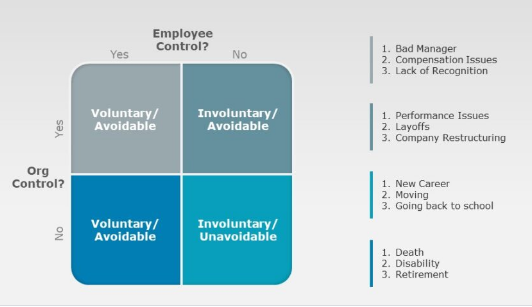Business Development
Employee turnover and Attrition
Both employee turnover and attrition follow when an employee leaves the organization. Turnover can be the consequence of various employment actions that include resignation, termination, or relinquishment of a job. Whereas, attrition happens when an employee retires or the company eliminates that particular work profile. The glaring difference between these two is that when it comes to turnover, the organization takes efforts to substitute the employee who has left; in contrast, when it comes to attrition, the position remains vacant, or the proprietor removes that job role downright.
Both Employee turnover and attrition can take place either involuntarily or voluntarily. Involuntary refers to the end of employment due to the employer’s state of affairs rather than the employee’s choice to leave. Involuntary turnover is a decision taken by the management or administration to dismiss an employee. This could be either because of poor performance or due to abuse of administrative policy. Involuntary attrition happens because of layoffs, decrease in job force, or removal of job position. Voluntary termination takes place when employees leave due to other opportunities, or other personal reasons. If the company searches for a replacement, it is voluntary turnover. If the employer eliminates it completely, it becomes voluntary attrition.
In short, both the terms turnover and attrition can impact staff planning processes.

Source: slideuplift.com
References
- El-Rayes, N., Fang, M., Smith, M., & Taylor, S. M. (2020). Predicting employee attrition using tree-based models. International Journal of Organizational Analysis.
- Gupta, M., Mandowara, N., Namdeo, K., & Patel, R. EMPLOYEE ATTRITION RATE PREDICTION.
